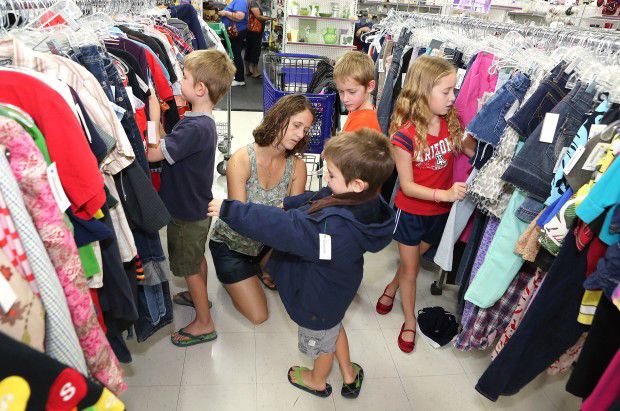It may not be the heady days of a decade ago, but consumer confidence in Arizona is the highest it’s been since the wheels came off the economy.
A new survey by the Behavior Research Center puts the confidence index for the state at 88.4 — double where it was at the beginning of 2009 in the depths of the recession. The index is based on a scale of 100, with 100 being how confident Arizonans were feeling in 1985 about current and future employment and business conditions.
Such confidence can be self-fulfilling: If consumers believe things are getting better, they’re more likely to spend money. The increased spending boosts the economy, increasing the demand for products and services which, in turn, means companies need to hire more people.
“It is certainly a good signal to retailers that the second half of the year may be very active,” said pollster Earl de Berge of the Behavior Research Center.
The brightest spot in the survey, said economist Dennis Hoffman, is Pima County, where optimism has really perked up — gaining more than 13 points since April.
He said the new numbers reflect solid job growth in the private sector in Arizona. The most recent figures show the state adding 74,900 jobs year-over-year, an increase of 3.4 percent.
Government jobs, notably in K-12 education, may pick up with schools getting a bump of new money from voter approval of Proposition 123, added Hoffman, who is with the W.P. Carey School of Business at Arizona State University.
But he also noted the consumer-confidence survey of 700 adult heads of household was conducted between June 6 and 19. That was before voters in Great Britain approved “Brexit” and withdrawal from the European Union, leading to widespread economic uncertainties.
Looking ahead, Hoffman wonders if the U.S. presidential race will affect consumers’ confidence. “Will they be disappointed by the election and will they hunker down and not spend?” he mused.
Despite the recent boost in consumer confidence in Pima County, conditions here remain mixed.
Asked about current business conditions, just 19 percent of those questioned in Pima County rated them as good, compared with 34 percent in Maricopa County and 27 percent in the other 13 counties.
More than a third of Pima County residents think jobs remain hard to get, versus 22 percent in Maricopa County. Still, that’s better than in the rest of the state, where half of those who responded said it’s hard to find a job.
Hoffman said that’s not surprising given the limited mix of the Pima County economy.
He said the state’s universities have had “a tough go,” and pointed out that the University of Arizona is a much bigger share of Pima County’s employment than Arizona State University is to Maricopa’s.
There’s an underlying weakness in defense and aerospace which also had a big impact on Pima County.
Yet with all that, optimism remains that things will get better.
Consider: Only 6 percent of Pima County residents think there will be fewer jobs in six months. That compares with 17 percent in Maricopa County.
And 30 percent of those questioned in Pima County think jobs will be more available by the end of the year, versus 25 percent in Maricopa County.
But while Pima residents think there will be more jobs, they’re not convinced they’re going to be earning any more.
Just 14 percent of Pima residents think family income six months from now will be higher, a number on par with the views of those in rural areas; the figure is nearly double in Maricopa County.





